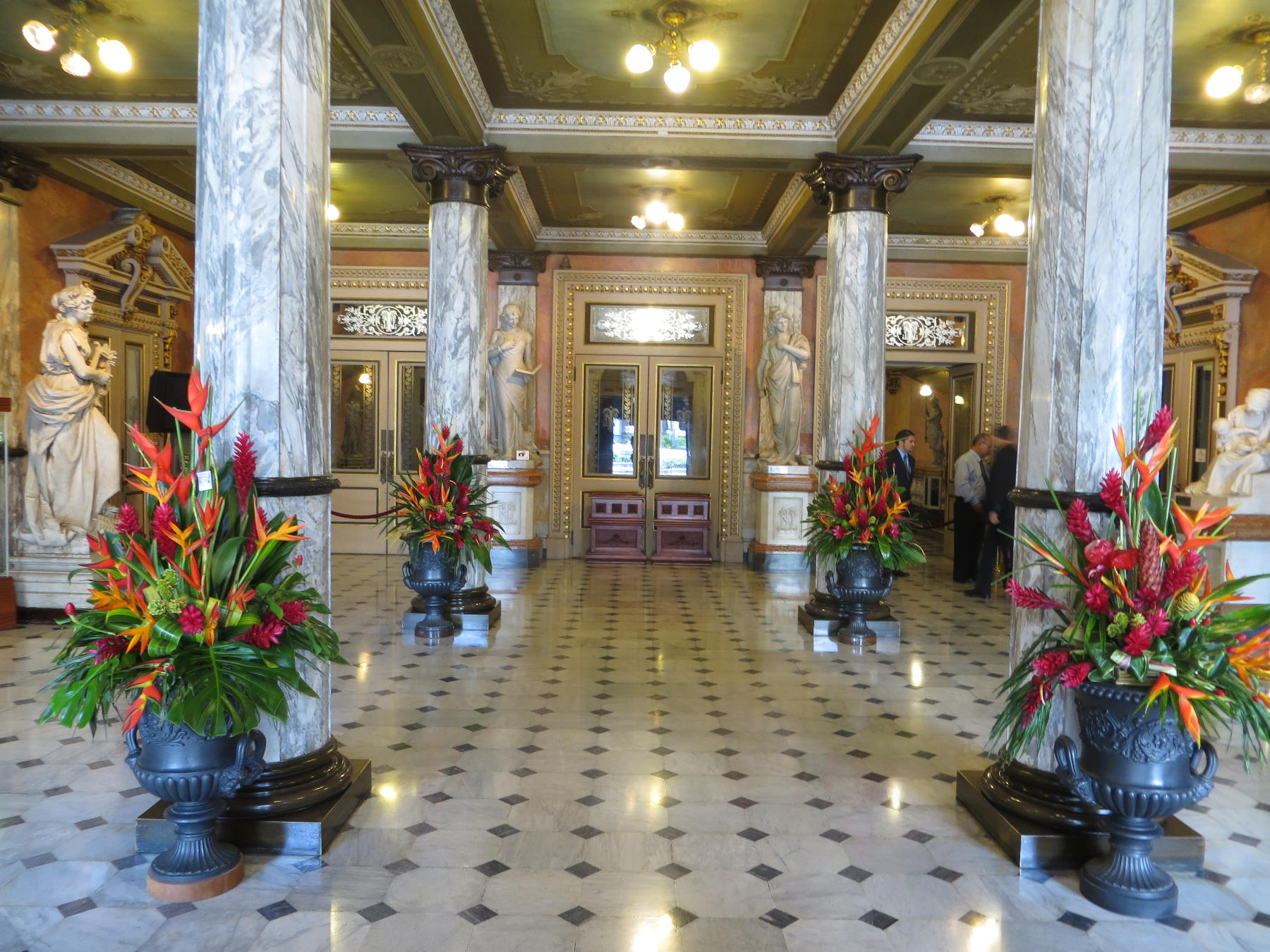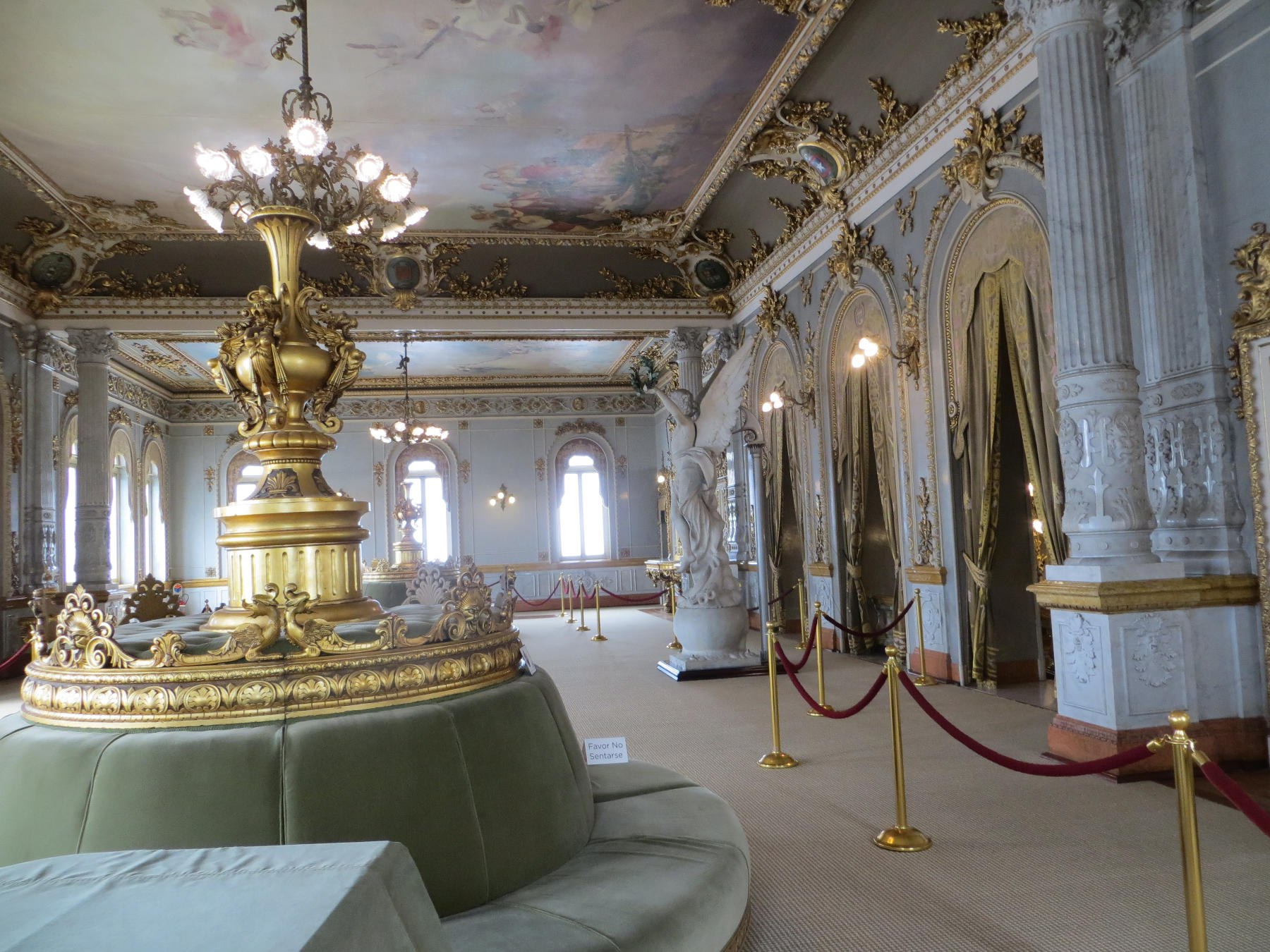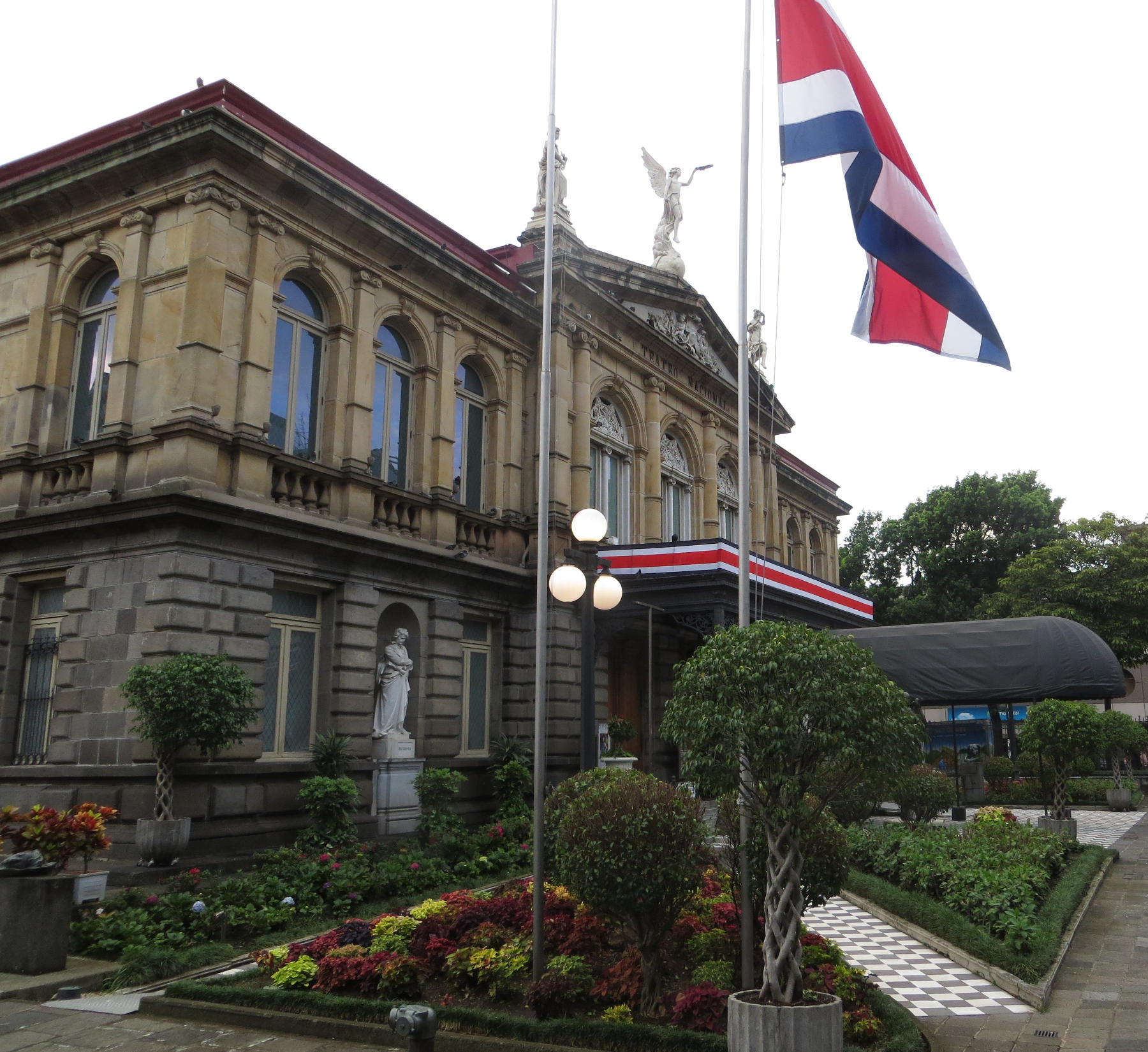Csota Rica Travel – If you ask the average Costa Rican, what feature of San José is he or she most proud, you will get two possible answers. Some will point to the national football (soccer) stadium, which is located in Sabana Park, about two miles west of the Downtown area.
 Others will say without hesitation, that it is the National Theater (Teatro Nacional de Costa Rica).
Others will say without hesitation, that it is the National Theater (Teatro Nacional de Costa Rica).
When you visit the National Theater, you will understand why everyday Costa Ricans are so proud of it. It is an architectural and cultural gem. And it is a vital part of the country’s history.
The story of Costa Rica’s National Theater, and how it came to be, is a fascinating one. To understand this, you need to keep in mind that San José was not the original capital of Costa Rica. During the Spanish colonial days, the country’s capital was the city of Cartago, about 15 miles to the east of San José.
When Costa Rica became an independent country in 1821, the capital was moved to San José. At that time it was a small, dusty, ramshackle town, whose economy was based on the hardscrabble agriculture that took place in the surrounding area.
Then, in the middle of the 1800’s, something amazing happened: The world discovered Costa Rican coffee!
Once that happened money started pouring into the Costa Rican countryside. Within a couple of decades, Costa Rica’s farms and plantations that had, for centuries, been barely surviving, suddenly discovered prosperity.
The successful coffee farmers, now flush with cash, typically did two things with their newfound wealth: 1. They built beautiful town-homes in the new capital city of San José, mostly in the area known as Barrio Amon. And, 2, they sent their children to Europe to be educated and to tour the continent.
The rise of the plantation owners (known collectively as the “coffee barons”), created a class of sophisticated, educated and well-travelled residents of Downtown San José. As their numbers grew, these residents became keenly aware that their city was an economic and cultural backwater, especially when compared to the artistic and intellectual centers of Europe. They yearned for the finer things in life.
After many years of talk, persistence paid off, and the nation of Costa Rica finally decided to build a national theater. Initially, it was to be funded by a tax on the exported coffee. Later, a general tax was imposed to cover construction costs. Historians tell us that this is an important point, since it meant that all Costa Ricans helped to pay for the new National Theater.
Construction began in 1891. After three years of mis-steps, cost overruns, and missed deadlines, Costa Rica hired a famous Italian architect who was an expert on building theaters. Under his guidance, the nation created a masterpiece.
When you visit the National Theater today, the first thing that will strike you, will be the beauty and elegance of the lobby. The floors and the columns are made from Italian marble, there are statues from Italian and Costa Rican artists, the ceiling panels are hand painted, the doors to the interior feature etched French glass. The effect is breathtaking.
You can visit the lobby for free. From there, you can go to the gift shop on the right or the coffee shop to the left. If you want to see the rest of the theater, you must either take a guided tour or attend a performance.
When you walk through the French doors you will continue to be enchanted. Majestic marble staircases go up either side of the interior lobby. The walls are adorned with gold-leaf details. There are antique bronze lamps, which your tour guide will be sure to inform you, were electric lamps since the Theater’s beginning. (Ticos are very proud of the fact that San José was the third city in the world to have electricity, after New York and Paris.)
Take the stairs to the second level and you will see the most famous painting in Costa Rica. It is “The Allegory to the Coffee and the Bananas,” by Italian artist Aleardo Villa. This image has been reproduced in several places, most notably on the back of the 5 colones bill (that’s right, I said a 5 colones bill) that was in circulation in the 1980’s.
Ticos have a love/hate relationship with this painting. It is supposed to be a composite of typical scenes in Costa Rica. But your guide will point out that the artist never set foot in Costa Rica, and that there are a number of “mistakes” in the painting, including the bunch of bananas that the artist portrayed upside down.
At the top of the stairs is The Foyer, an elegant room that has been used for meetings, receptions and recitals. Here are more classical statues, elegant ornaments and angelic ceiling art. You will also see that the ceiling has a coat of arms for each of the seven provinces of Costa Rica.
Finally, there is the auditorium. This is laid out in the style of European opera houses, with seating in a horseshoe shape, that will accommodate just over 900 spectators. This is a small theater, compared to the grand concert halls of Europe and the U. S. But its small size assures you that there is not a bad seat in the house. No matter where you sit, you are close and intimate to the performers.
The best way to visit the National Theater is to see a performance. I can tell you about a concert I attended a few months back. I was the guest of Jerry Ledin, a fellow member of the Association of Residents of Costa Rica. Jerry is an expat from San Diego who has season tickets to the National Symphony Orchestra performances. We sat on the second level balcony, not far from the Presidential Box, and had a sweeping view of the entire room.
Jerry Ledin, a fellow member of the Association of Residents of Costa Rica. Jerry is an expat from San Diego who has season tickets to the National Symphony Orchestra performances. We sat on the second level balcony, not far from the Presidential Box, and had a sweeping view of the entire room.
During that concert, I watched as two symphonies were performed. The first was an exquisite piece by Joseph Haydn that required only strings. That was just the warm-up act for the main event: Beethoven’s 9th Symphony.
After an intermission, the entire orchestra assembled, along with a fifty-voice chorus and four soloists, to perform Beethoven’s last symphony. From the powerful first movement, to the triumphant final Ode to Joy movement, it was clear why this work has inspired millions for nearly two centuries. I found myself shaking as Costa Rica’s National Symphony Orchestra brought the work to its exciting conclusion.
The National Theater of Costa Rica hosts more than classical music. During any month, you may find performances of Japanese music, plays, folkloric dance numbers done by Costa Rican school children, or conversations with noted speakers such as Nobel Peace Prize winner Oscar Arias. The Theater has been the venue for meetings with U. S. Presidents John F. Kennedy and Ronald Reagan.
On October 21st, 1897, thousands of citizens of San José crowded the dusty streets and sidewalks near the new National Theater of Costa Rica. This was the night of the grand opening.
It was a glittering event that was attended by the city’s elite citizens, by visiting diplomats, and by military men in full dress uniform. Costa Rica’s president, Rafael Iglesias, and his wife, decided to walk from their house to the theater, and were cheered by the crowd.
The performance that night was an opera version of “Faust” by the renowned Aubry French Opera Company. By all reports, it was a great success. . . . the first of many great successes at the National Theater.
The National Theater is one of the most treasured buildings in the country. Costa Ricans of all classes take great pride in it. For visitors to the Costa Rica and for expats living here, I will tell you this: If you care about Costa Rica, if you want to learn about the people, about their history and about their culture, the National Theater of Costa Rica is a must-see.
The National Theater of Costa Rica is located between the Plaza de la Cultura and Avenida Segunda (2nd Avenue). The Theater faces Calle 3 (3rd Street) which is a pedestrian walkway at this point. It is open to the public from 9 a.m. to 5 p.m. Guided tours in different languages are scheduled throughout the day, and cost $10 U.S.
To learn about upcoming performances, visit the Theater’s website at: teatronacional.go.cr
All colour photos taken my Michael Miller.
Michael Miller is the author of the only guide-book that focuses on Downtown San José Costa Rica, titled: The Real San José. To read more of his articles about Downtown San Jose, visit his website by clicking here: TheRealSanJose.com

